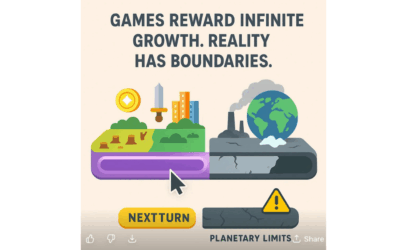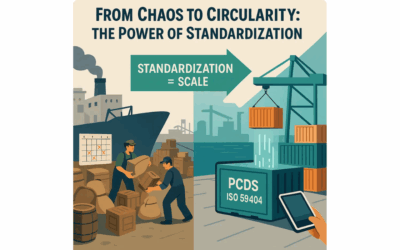Why We Need Circular Economy 2.0
A decade ago “circular economy” meant keeping products in use, cutting waste, sparing raw materials. Today the word appears on every sustainability slide, yet little has changed: only 11–12 % of EU resources and 6.9 % of global resources come from recycled feedstock (European Commission; circularity-gap.world). If all those “circular” projects worked, these numbers would be climbing—not stuck.
THE UMBRELLA PROBLEM
“Circular economy” covers many moves—recycled content, renting, repair-friendly design, longer use, end-of-life recycling. Each strand matters, but bundling them under one loose label lets firms pick the easiest action and still claim the prize. A factory recycling its own scrap can market an entire product line as “circular,” opening the door to circular-washing.
This umbrella problem has a deeper consequence: it reduces accountability. When every activity can be branded as “circular,” companies naturally gravitate to the low-hanging fruit—lightweight packaging, token recycling programs, or recycled paper in the office—while ignoring the structural redesign needed to reduce virgin resource demand. Without sharper boundaries, “circular economy” risks becoming as vague as “sustainability,” a feel-good signal with little measurable impact.
WHY IT MATTERS
At today’s pace, global raw-material demand could jump 60 % by 2060. Climate goals, biodiversity, and resource security all hinge on reversing that trend; a buzzword without rules won’t do the job.
The stakes go beyond waste. Every ton of virgin material extracted fuels emissions, land degradation, and water stress. A true circular economy must therefore be judged not by how well we recycle, but by whether we actually reduce material throughput. That’s why Circular Economy 2.0 is urgent: it puts numbers where promises used to be.
CIRCULAR 2.0: A FRESH START
We need a tighter, data-driven upgrade:
- state which material flows must shrink—and by how much;
- track a few hard numbers (share of virgin input, repairability, take-back rate, recycled content);
- publish the data so anyone can test the claim.
Circular Economy 2.0 doesn’t abolish today’s initiatives; it refines them. Repair programs, modular design, and take-back schemes only matter if their impact shows up in reduced virgin material demand. That means metrics must be consistent across industries, transparent in reporting, and auditable by regulators, investors, and customers.
Clear metrics turn “circular” from a slogan into a measurable goal and let investors, regulators, and customers reward firms that actually cut material use.
When everything is called circular, nothing is. Circular 2.0 gives the idea sharp edges—and a real chance to close the loop




0 commentaires